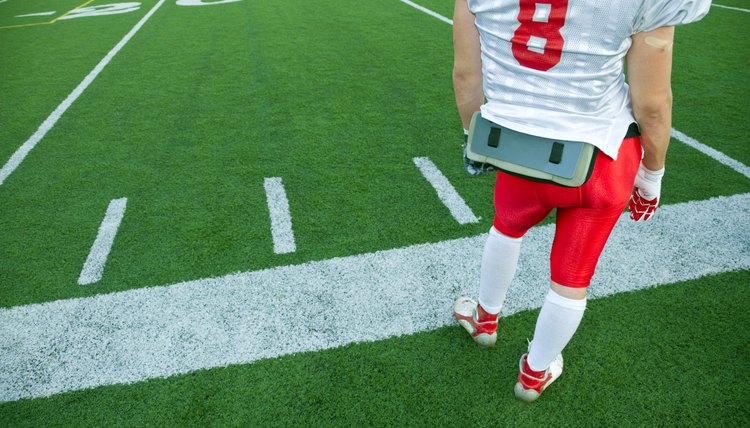High School Football Rules on Cleat Length

Football games may be played on a wide variety of surfaces, ranging from muddy and wet to artificial turf. In order to maximize speed and agility on any surface, football players change their footwear and cleats to match the conditions and maximize grip. High school players must abide by a rule regarding the maximum length for cleats.
Measurement
Cleat length is determined by measuring the distance from the tip of the cleat to the sole of the shoe. In high school play, the cleat length must be no longer than 1/2 inch. Some sporting goods stores sell longer cleats, but it is the player’s responsibility to be aware of the rules and how to measure the cleats.
Function
The cleat length rule is intended to prevent an unfair advantage as well as to decrease the risk of injury. Players who choose to wear longer cleats may have better traction, but they are also more susceptible to injuries. When a cleat gets stuck in the playing surface, the player can twist an ankle or knee -- which can result in a serious injury.
Types
In addition to meeting the length requirement, high school football cleats must be detachable or molded. The detachable cleats are most common because they allow the players to adjust or change their cleats. Molded cleats feature non-removable studs and typically are less than 1/2 inch long.
Tips
High school football rules allow cleats to be metal-tipped, but they cannot be all-metal spikes similar to those on a baseball shoe. The metal-tipped cleat has a hard plastic body and is easily changed, as in the case of detachable cleats. The metal tip helps to prolong the life of the cleat by reducing wear.
References
Writer Bio
Based in Nebraska, Jeremy Hoefs began writing fitness, nutrition, outdoor and hunting articles in 2006. His articles have been published in "Star City Sports," "Hunting Fitness Magazine" and RutWear field journals, as well as on the Western Whitetail website. Hoefs graduated with a Bachelor of Science in exercise science from Nebraska Wesleyan University.
